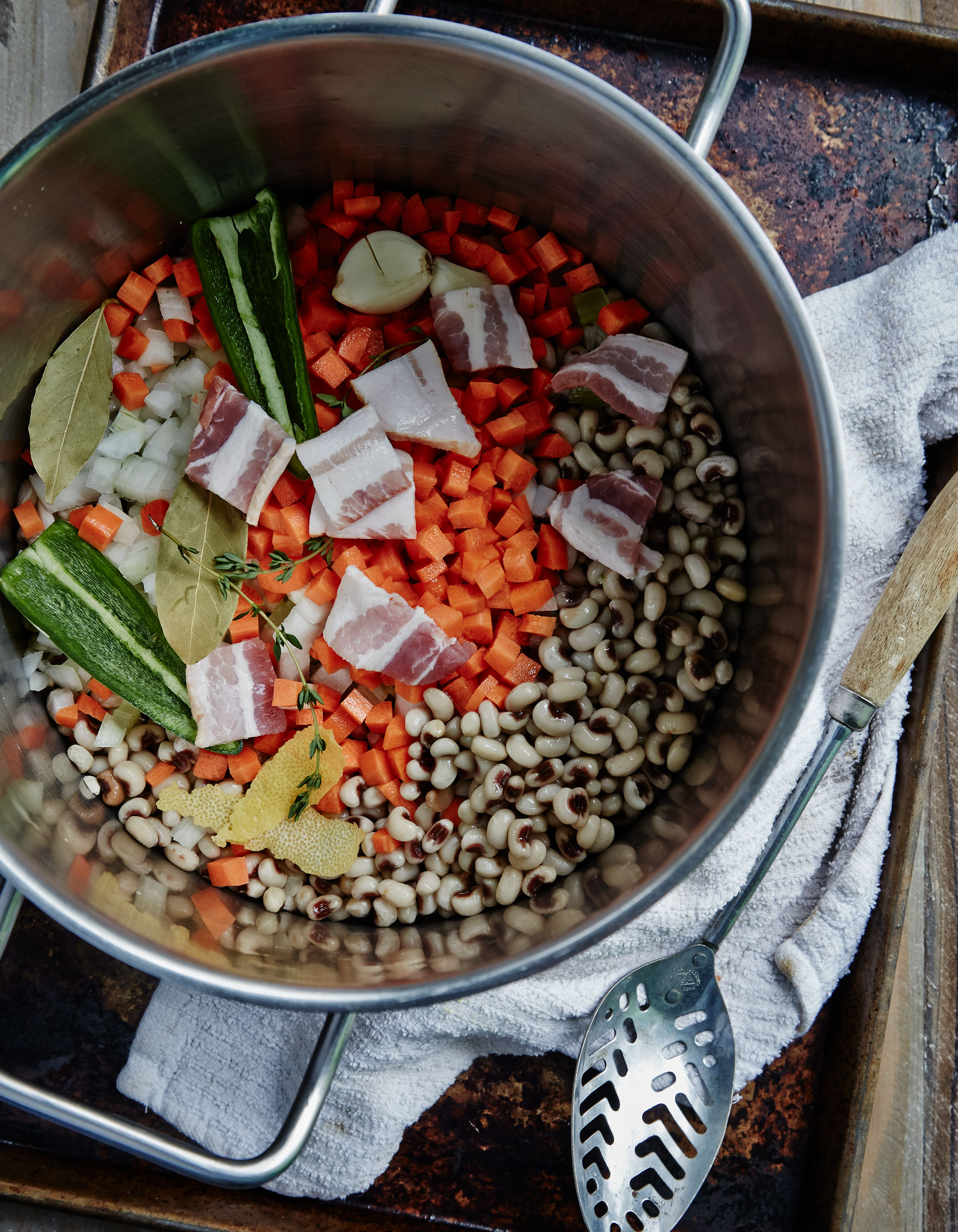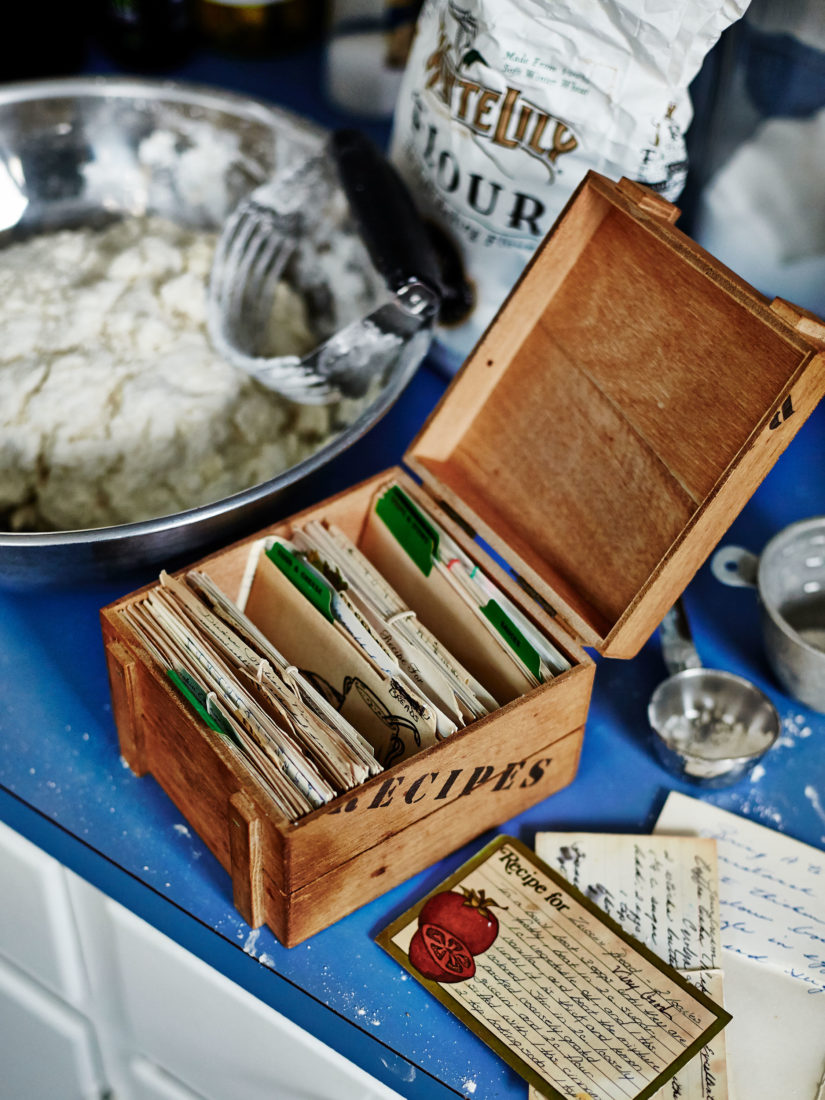Southerners have a flair for language. See: William Faulkner, Margaret Mitchell, Tennessee Williams, Harper Lee, Truman Capote…So it’s no surprise that our linguistic skills combine with our culinary ones in curious ways. And we don’t mean “heapin’ helpin’s of vittles and fixin’s.”
This glossary is not intended to be a complete list of Southern culinary terminology. Nor is it intended to catalog our region’s countless dishes—from Creole gumbo to Lowcountry Frogmore Stew, with all their hyper-regional subvarieties. You’ll find recipes for many of those elsewhere on this website. It’s simply a collection of terms that have special meaning in the Southern kitchen.
Barbecue: A noun or adjective only, never a verb: meat slowly smoked over hardwood or charcoal. Usually pork or beef; smoked chicken or turkey might be described as “barbecue chicken” or “chicken barbecue.” In Kentucky, it may also include lamb or mutton.
Bark: The charred, extra-smoky exterior of barbecue. Rarely on the menu, but nearly always available at barbecue joints, where you can place an order of pulled pork with “extra bark.” Also called “outside brown” or just “brown.”
Boil: A generic term, both noun and verb, for Southern outdoor gatherings at which shellfish (enough to feed a good-size crowd) is boiled, along with potatoes, corn, and seasonings in a large pot. The dish is inseparable from the event. In coastal South Carolina and Georgia Lowcountry boils, shrimp and crab go into the pot. In Louisiana, crawfish.
Buggy: The wheeled shopping basket you use to hold groceries at Piggly Wiggly (aka “the Pig”), Publix, Harris Teeter, or any other Southern grocery store.
Chicken-Fry: The verb describing the process by which chicken is prepared—dredged in seasoned flour, then fried in oil or melted lard until golden-crisp. Also applies to other foods cooked in this manner. (See the recipe for Chicken-Fried Short Ribs.)
Cracklins or Cracklings: Crisp, savory leavings––may be skin, meat, or membrane––from the rendering of pork fat. Not to be confused with chitlins or chitterlings, which are hog intestines that have been turned inside-out for a thorough, laborious and…shall we say fragrant cleaning, then simmered to soften.
Debris (DAY-bree): In New Orleans, a rich beef gravy full of pan drippings and bits of meat. Elsewhere in Cajun cuisine, the term refers to a more rustic gravy made with organ meats and other parts left over from hog butchering.
Deviled: To be made spicy, usually with the addition of cayenne pepper or hot sauce. As with eggs, crab, or ham.
Dinner: The midday meal, historically quite large, as it was the primary fortifying meal of the day. The evening meal, usually smaller, may be called “supper.”
Frying Pan: A common term for the cast-iron skillet, which is used for frying as well as searing, sautéing, simmering, and even baking. About ten inches in diameter, on average, although many sizes are available, and frequently notched on one side for easily pouring off grease. Does not refer to stainless-steel, copper, or nonstick pans—Teflon, ceramic, or otherwise.

Peter Frank Edwards
Grease: Flavorful, semi-bold bacon-fat renderings or drippings, which can be used in place of butter or oil to start a sauté. Often kept at room temperature in dedicated canisters, some with filters that remove any particles or browned bits, although coffee cans work fine for this purpose too.
Greens: Most frequently applies to hearty winter greens, like collard, mustard, and turnip. (See also “mess.”) In Appalachia, may also refer to more tender spring lettuces, which may be eaten raw in salads or cooked. (See also “kil’t.”)
Holy Trinity: The Father, Son, and Holy Ghost, yes. Also the combination of celery, onion, and bell pepper at the heart of nearly every Cajun or Creole dish you can imagine, from grillades to gumbo.
Ice, Icing: Applied to a cake, the same as “frost” or “frosting.” Refers to both a thin sugary glaze or a thick buttercream.
Icebox Desserts: Frozen concoctions, similar to ice cream, but without all the churning. Similar to Italian semifreddo, often with fanciful names that might include such words as “delight” or “delectable.” Usually molded in loaf pans, though the term may also apply to pies made with frozen fillings. The “icebox” refers back to a time when refrigeration was accomplished with large blocks of ice stored in insulated cabinets or chests.
Kil’t: An adjective commonly used for greens that have been wilted, or “killed.”
Light Bread: A synonym for store-bought loaf bread made from white flour. As opposed to “bread,” which for much of Southern history automatically meant cornbread in its many variations.
Meat and Three: Exactly what it seems: a plate containing one meat with three vegetable sides (which includes mac and cheese), served, often cafeteria-style from steam tables, by restaurants known as “meat-and-threes.” The dishes are deliciously homey—think hamburger steaks with brown onion gravy or fried catfish.
Mess: Frequently applied to greens, but can also apply to any food cooked in large quantity. Implies an amount that would require using a stockpot.
Milk: As a verb, the process by which the milky liquid inside individual kernels of corn is removed, usually accomplished by firmly running the back of a knife down the length of an ear of trimmed corn. (Only when the ear is shucked, de-kerneled, and dried does it become a “cob.”)
Old Ham: A synonym for salt-cured country ham, which can be aged for years before eating. Ordinary ham, the moist, tender kind, is often called “city ham,” to distinguish it from its country cousin. For more on old ham’s preferred partner, the biscuit, and its many forms, click here.
Pea: Less likely to refer to round green English peas than starchy field peas (black-eyed, pink-eyed, etc.), which can be cooked from fresh or frozen, or rehydrated from dried. Similar to—but not the same thing as—butter beans, which are a small, pale yellow-green variety of lima beans.

Peter Frank Edwards
Picking: A noun used to describe the party that commences as soon as a whole-smoked and roasted hog comes off the pit. Also the process by which its meat is hand-pulled.
Poke or Polk: In conjunction with “salad” or “sallet,” refers to pokeweed, a common wild green that’s both edible and poisonous. Young leaves—never stems, berries, or roots—must be boiled, like other greens, changing the water at least two or three times to remove the toxins naturally present in the plant. “Poke” may also refer to a bag or sack used to carry food.
Potlikker: The meaty, nutrient-rich liquid left behind after a “mess of greens” is cooked, usually with a smoked ham hock or a piece of salt pork. “Beanlikker” is similar, but thicker-bodied than potlikker due to starches leached from the beans.
Put Up: As a verb, to preserve by canning or pickling; jars of canned fruits or vegetables, pickles, jams, or preserves are sealed in sterilized lidded jars and then stored (i.e., “put up”) for later use. As an adjective, the description of said preserved items (e.g., “put-up green beans”).
Roast: As a noun, an oyster roast. Like a “boil” or a “picking,” a gathering at which the dish and event are one.
Season: A cast-iron skillet must be periodically “seasoned” with oil or lard to maintain its nonstick properties. When slowly heated, the oil polymerizes and bonds to the pan’s surface. Despite popular myth, soap won’t remove that polymer; feel free to gently wash your frying pan after every use.
Smidge: A small amount, roughly analogous to a pinch, but likely even less, as determined by intuitive cooks. Similar to—but not the same as—“skosh,” also a small amount, but more often applied to libations.
Sweet milk: Whole cow’s milk, called “sweet” to distinguish it from tart buttermilk. Not to be confused with sweetened condensed or evaporated milk, which may often be described by their brand names (e.g., “PET milk”).
—Excerpted from The Southerner’s Cookbook, available at Fieldshop, Bookshop, Amazon, and in bookstores everywhere.








